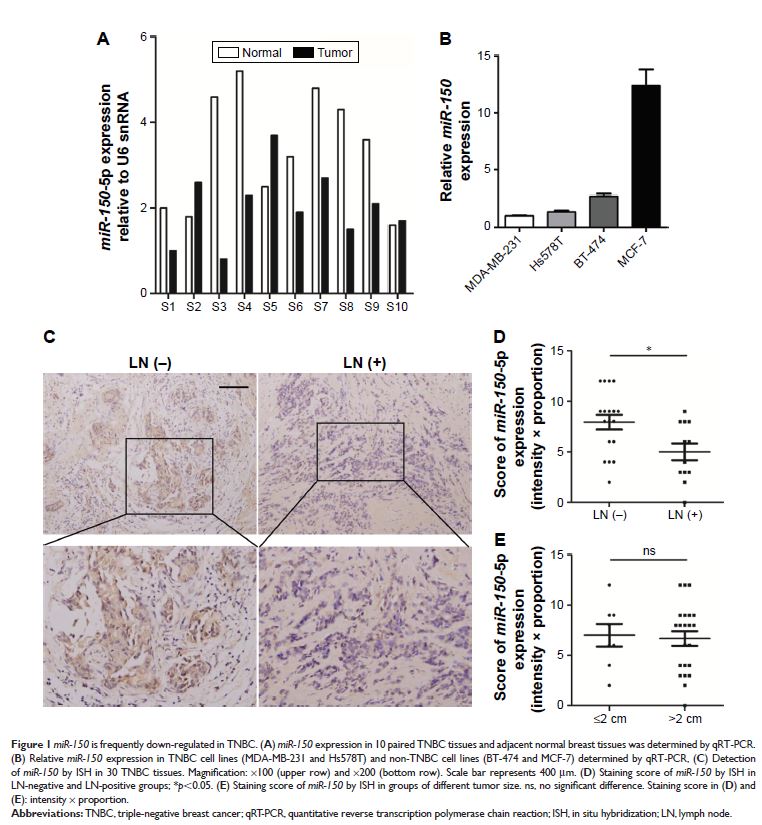108985
论文已发表
注册即可获取德孚的最新动态
IF 收录期刊
- 3.4 Breast Cancer (Dove Med Press)
- 3.2 Clin Epidemiol
- 2.6 Cancer Manag Res
- 2.9 Infect Drug Resist
- 3.7 Clin Interv Aging
- 5.1 Drug Des Dev Ther
- 3.1 Int J Chronic Obstr
- 6.6 Int J Nanomed
- 2.6 Int J Women's Health
- 2.9 Neuropsych Dis Treat
- 2.8 OncoTargets Ther
- 2.0 Patient Prefer Adher
- 2.2 Ther Clin Risk Manag
- 2.5 J Pain Res
- 3.0 Diabet Metab Synd Ob
- 3.2 Psychol Res Behav Ma
- 3.4 Nat Sci Sleep
- 1.8 Pharmgenomics Pers Med
- 2.0 Risk Manag Healthc Policy
- 4.1 J Inflamm Res
- 2.0 Int J Gen Med
- 3.4 J Hepatocell Carcinoma
- 3.0 J Asthma Allergy
- 2.2 Clin Cosmet Investig Dermatol
- 2.4 J Multidiscip Healthc

MicroRNA-150 通过靶向 HMGA2 抑制三阴性乳腺癌转移
Authors Tang W, Xu P, Wang H, Niu Z, Zhu D, Lin Q, Tang L, Ren L
Received 9 January 2018
Accepted for publication 21 February 2018
Published 24 April 2018 Volume 2018:11 Pages 2319—2332
DOI https://doi.org/10.2147/OTT.S161996
Checked for plagiarism Yes
Review by Single-blind
Peer reviewers approved by Dr Cristina Weinberg
Peer reviewer comments 2
Editor who approved publication: Dr Tohru Yamada
Background: Growing
evidence suggests that miR-150 plays
an inhibitory role in various types of cancer. However, the function and
underlying mechanisms of miR-150 in
triple-negative breast cancer (TNBC) remain unknown.
Patients and
methods: miR-150 expression
was detected by qRT-PCR and ISH in TNBC tumor and adjacent normal breast
tissues. miR-150 function was analyzed
by wound healing and transwell assay in vitro and mouse lung metastasis model
in vivo. mRNA microarray, qRT-PCR, western blotting and luciferase assay were
used to identify the target gene of miR-150 . HMGA2
over-expression plasmid was co-transfected with miR-150 to study the role
of miR-150 through regulating
HMGA2.
Results: We found that miR-150 was
down-regulated in TNBC tumor tissues compared to corresponding adjacent, normal
breast tissues, and was correlated with decreased lymph-node metastasis.
Ectopic expression of miR-150 suppressed
TNBC cell migration in vitro and metastasis in vivo. Mechanistic study revealed
that miR-150 down-regulates HMGA2
by directly targeting its mRNA. Moreover, the suppression of cell migration
caused by miR-150 is relieved by
over-expression of HMGA2, suggesting that miR-150 inhibits
migration of TNBC cells by down-regulating HMGA2.
Conclusion: This work indicates that the miR-150 /HMGA2
axis may serve as a treatment marker in TNBC.
Keywords: miR-150 , HMGA2, triple-negative
breast cancer, metastasis
